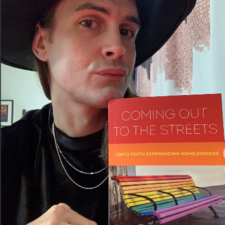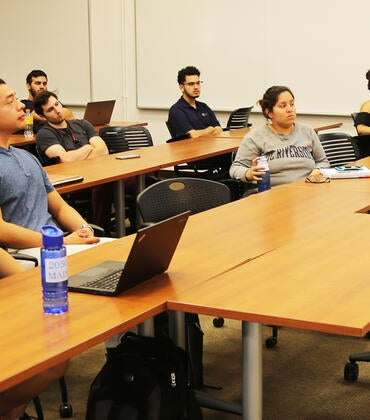
Some LGBTQ youth who are rejected by their parents wind up living on the streets or in other unhoused situations. But not all LGBTQ youth experiencing parental rejection end up in shelters or outside. A UC Riverside professor aims to find out the role that other family members, such as grandparents and aunts and uncles, play in housing outcomes. The study is the first to examine how non-parental relatives’ support shapes housing stability and safety.
Brandon Andrew Robinson, an associate professor of gender and sexuality studies, has received a $300,000 grant from the National Science Foundation to study LGBTQ youth with low parental support in the Inland Empire region of Southern California and in South Texas to learn if non-parental relatives who offer practical and emotional support improve housing outcomes for the youth. Robinson’s collaborator on the project, Amy Stone, a professor of sociology and anthropology at Trinity University in Texas, also received $300,000. Robinson and Stone plan to interview and survey 80 predominantly working-class, rural, and Black, Latino, Asian, and Indigenous youth multiple times over a 14-month period to observe how their situations change over time.
“With this study, we hope to expand upon the often over-focus on parent-child relationships within the LGBTQ family support literature to examine the roles of other family members,” Robinson said. “In doing so, we seek to provide key practices that non-parent family members engage in that provide support and safety and reduce housing instability. We will transform these practices into programming as a way to cultivate relatives as valuable allies for LGBTQ youth.”
One in 10—about 3.5 million—youth 18 to 25 years old experience housing instability yearly in the United States. Around 40% of these are lesbian, gay, bisexual, transgender, and queer (LGBTQ). They are also disproportionately youth of color. Past research has investigated rejection, familial abuse, familial and residential instability, backgrounds of poverty, and discrimination within child custody systems as pathways to homelessness, but none has focused on the role of non-parental family members.
Robinson’s prior work with LGBTQ youth in Texas homeless shelters and drop-in centers revealed that family rejection within a context of poverty, racism, and instability, along with social institutions that police gender and sexuality, create violent spaces that push young people out.
While presenting findings from this previous study, Robinson was often asked what happens to LGBTQ youth experiencing housing instability who do not end up at shelters. Given the design of Robinson’s previous study, they could not answer this question. Robinson assumed, though, that youth not at shelters, but who left their parental home, had other family members to rely on for support and stability. The current research addresses this research gap that misses the role non-parental family members may play in helping youth stay housed and safe.
The new project will use social media, paid social media ads, and local LGBTQ organizations’ mailing lists to reach youth with low parental support who feel unsafe but are not yet unhoused. Two-thirds of the youth will be Black, Latino, Asian, and Indigenous LGBTQ youth, and one quarter will be from rural areas to understand how race and location shape their family experiences.
“As LGBTQ youth of color disproportionately make up the LGBTQ youth experiencing homelessness population, we find it essential to make sure our study incorporates mostly Black, Latinx, Asian, and Indigenous LGBTQ youth,” Robinson said. “We also assume that instrumental and emotional support may be particularly critical for rural LGBTQ youth and for Black, Latinx, Asian, and Indigenous LGBTQ youth who often already rely more heavily on extended kinship networks for family support. We want to capture these intersecting dynamics.”
Header photo: Rajiv Perera on Unsplash




